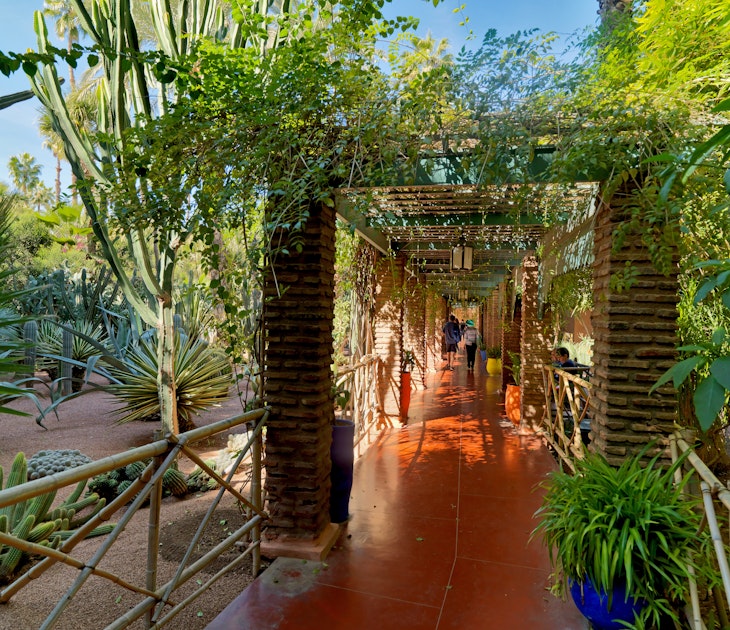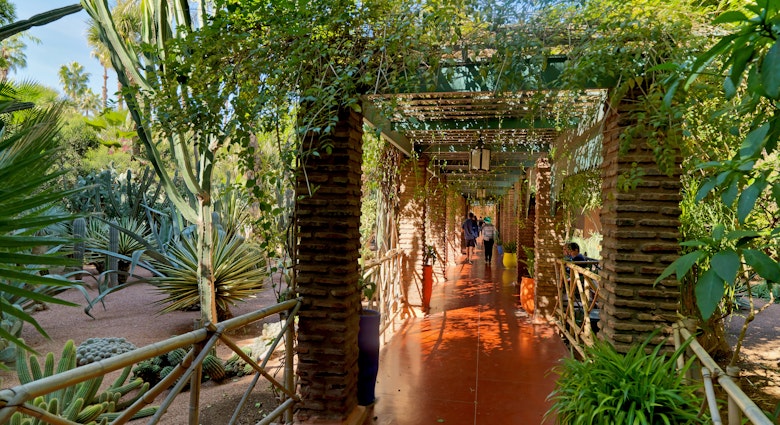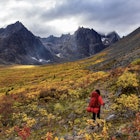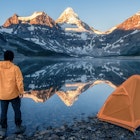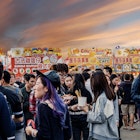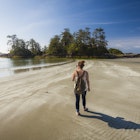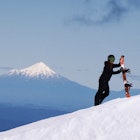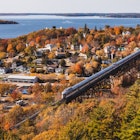This summer, travel for most people will mean staying within the confines of their home country, region, or state. Fortunately for me, "home" these days is British Columbia in Canada. Bequeathed with mountains, glaciers, surfing shores and 198 different indigenous cultures, BC is four times the size of my native UK. After three months of COVID-avoiding confinement, it feels like an extravagantly spacious place for a summer staycation.
British Columbia has been quietly successful in suppressing the coronavirus. Despite a relatively soft lockdown, hospitals have never been over-stretched. By mid-June, active cases were down to under 200 and the province had registered only one death in two weeks. In an effort to re-boot the economy, hotels and restaurants began to reopen, and national and provincial parks started to welcome back hikers and campers. Recovering from an elongated dose of cabin fever, I decided the time had come to venture beyond my local shopping mall and see what life in BC looked like post-COVID-19.

Traveling to Vancouver Island
With public health recommending we didn’t stray too far from our home bases until later in the summer, I elected to undertake a four-day spin around lower Vancouver Island on a bicycle. It was a low-risk option. I can see Vancouver Island’s purple-hued mountains from the end of my street. Across the water, they looked strangely alluring to my pandemic-weary eyes but, at the same time, familiar and easy to get to. Even better, by mid-June, the island was reporting zero active COVID-19 cases.
Nevertheless, difficult times necessitated a more meticulous approach to pre-trip preparation. A few days before I left, I phoned ahead to check accommodation and eating joints were open and adequate COVID-19 etiquette was in place. Price was another key consideration. As a travel writer in an era of practically no travel, it was imperative to keep a close eye on the bottom line. This, I concluded, was going to be my cheapest shoestring trip since my days as a cash-strapped backpacker.
It got off to a good start. Bikes are free on BC ferries and walk-on passenger fares are substantially lower than cars. Once onboard, drivers are encouraged to stay in their vehicles, leaving ample room in the upstairs lounge where the seating capacity had been reduced to encourage social distancing. Face masks were recommended but not mandatory: at a guesstimate, 25% of passengers were wearing them. With a warm sun emerging from the behind the ramparts of the Cascade Mountains, most people gravitated toward the outside decks as the ferry slipped gracefully through the island-speckled Georgia Strait.
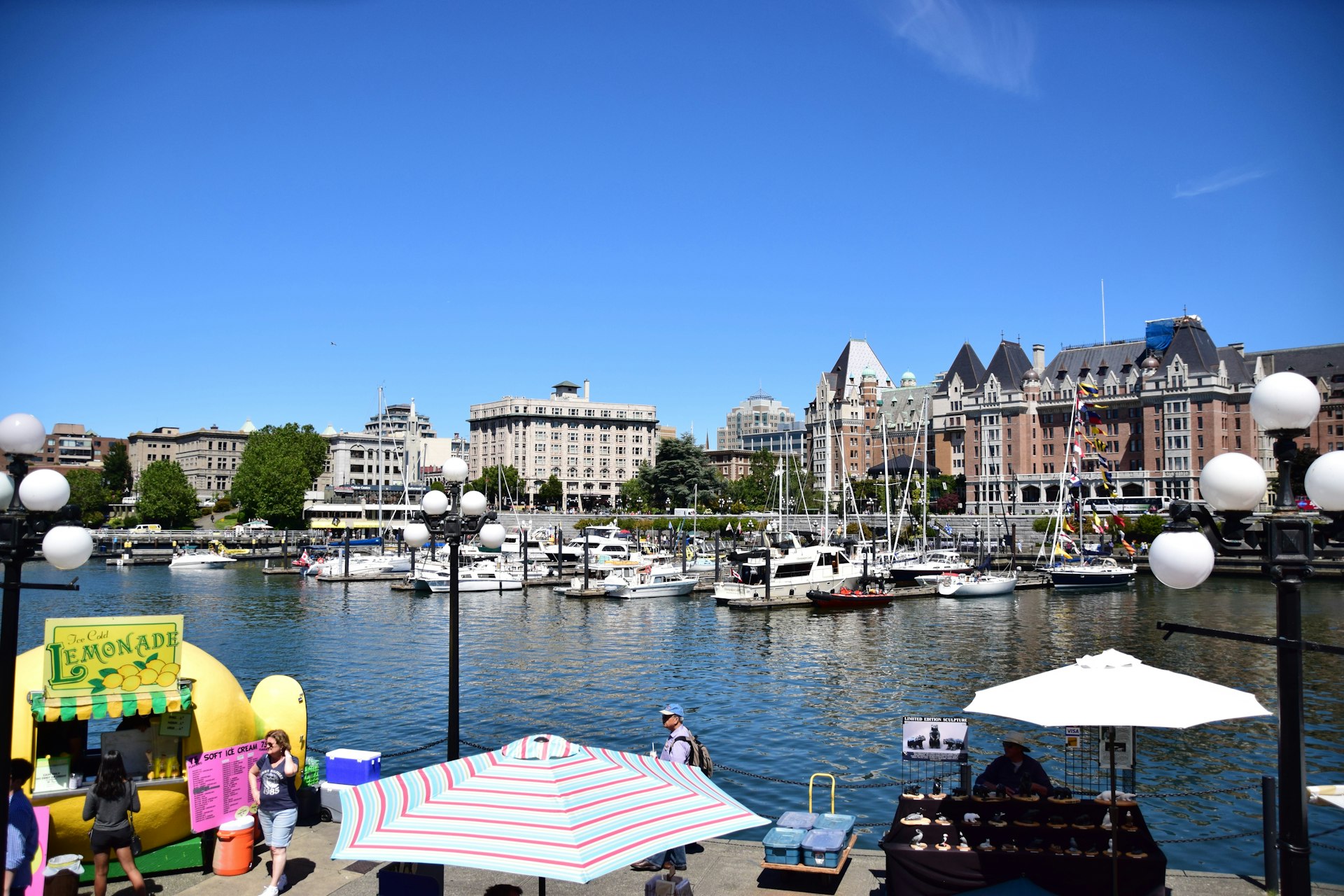
Visiting Victoria
From the arrival dock in Swartz Bay, a designated bike path cuts through farmland and garden suburbs to the city of Victoria. In keeping with pandemic transport trends, it was busy with bicycles: families pulling chariots, seniors getting their daily dose of vitamin D and, closer to town, groups of teenagers escaping parental control on two wheels in a throwback to the 1980s.
On the first night, I stayed in the Ocean Island Inn, a hostel in central Victoria. With the shared dormitories closed, I booked a comfortable double room for just C$44 including safe storage for my bicycle. The hostel had adopted a standard set of COVID-19 protocols without sacrificing its customary congeniality. Hand sanitizer was abundant, plexiglass screens shielded clients from staff, and a one-way entry–exit system ensured there weren’t any awkward encounters on the stairways.
Just over a year ago, I updated Vancouver Island for a Lonely Planet guidebook and I was anxious to see which local businesses had survived the pandemic. Thankfully, most of my recommendations appeared to have weathered the storm reopening with temporarily reduced capacity and, no doubt, significant losses in income. Tourist sights were rebooting too. The Royal BC Museum was hosting an exhibition on wildlife photography. It was even possible to go whale-watching.
Grabbing a pew in my favorite downtown pizza restaurant (where all the staff wore face masks), I was gratified to learn that the crusty pies had lost none of their pre-pandemic sparkle. There were several family groups dining inside and it felt good to recline amid the buzz of conversation while trickling some money back into the local economy.
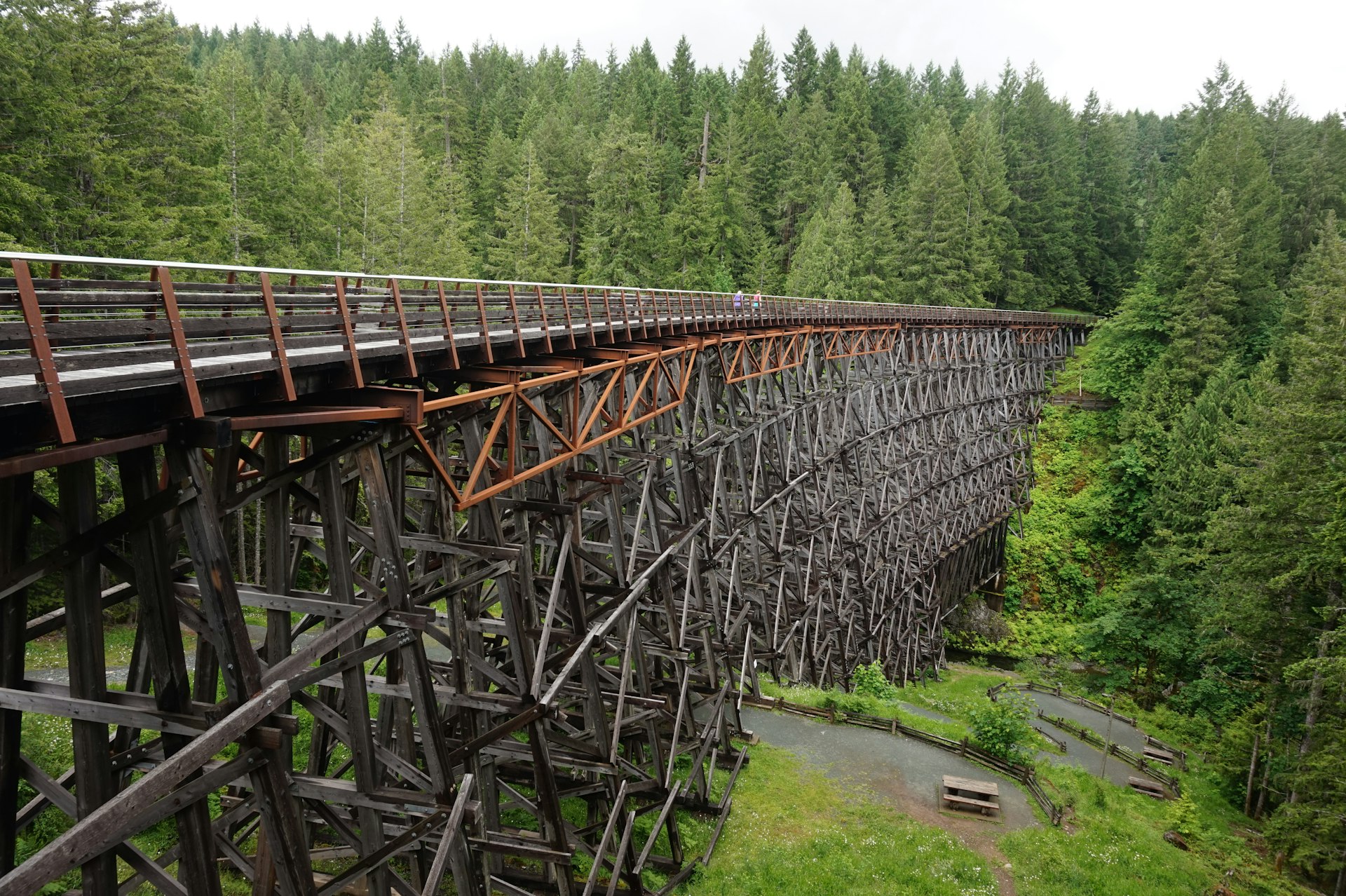
The ride to Lake Cowichan
Day two involved a tough 100km (62-mile) ride north to Lake Cowichan that occupied me until late afternoon. Within an hour, I had shrugged off the suburbs of Victoria and entered a wilder, greener domain refreshed by light misty rain. I was following the western extremity of the Trans-Canada Trail, most of it proceeding along the course of an old railway line. It was quiet, muddy, but eerily beautiful.
One of the hidden blessings of the pandemic is the way in which it has shifted our notion of gratitude. After months of lockdown, I felt a new sense of appreciation for things I had once taken for granted. As the trail penetrated deeper into the forest and wet mud splattered my arms and legs, I began to relish the freedom of the open road: the familiar BC dampness, the dull ache in my bike-legs, the feeling of wind blowing through what’s left of my hair. Soon after crossing the Kinsol Trestle, a spectacular wooden railway bridge, I saw a black bear foraging close to the path – and then, several kilometers further on, another one. By the time I reached the small community of Lake Cowichan adrenaline racing, I was thinking more about ursine fauna than coronavirus. I’d rarely felt so alive.
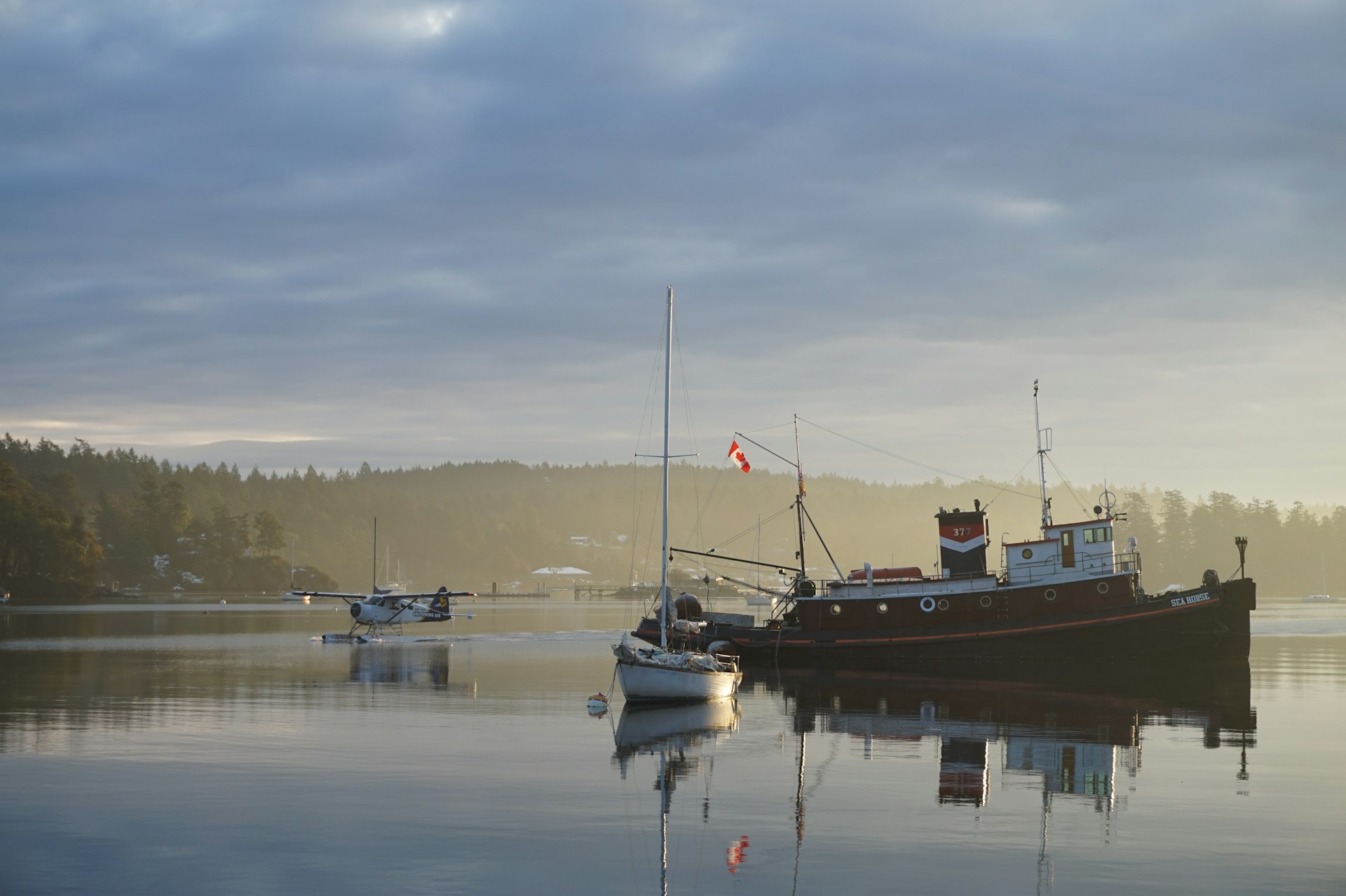
Heading east to Salt Spring Island
That night’s B&B was the epitome of rural BC hospitality: homey, comfortable, and seemingly unfazed by the outside world with a breakfast so large I saved half of it for lunch. In the evening, I readjusted my original travel plans and decided to pitch east the next day to catch a ferry to Salt Spring Island. This insular Eden wedged between Vancouver Island and the mainland is a long-time favorite of my family. My plan was to bag a cheap inn, cycle up steep Mount Maxwell for the best view in southern BC, and reward myself afterwards in a barn-like microbrewery that uses local hops.
Avoiding close encounters with mud, bears and other humans, I managed to do all three. The inn cost me C$74, the bike ride around 3000 calories, while the beer from Salt Spring Island Ales was, arguably, the best C$7 I’ve ever spent on an alcoholic beverage. Imbibing it on a breezy patio in the middle of a wooded glade allowed me to reflect on what, for all its simplicity, will go down as an epic trip.
How has southern BC changed?
My brief excursion around southern BC revealed a world both familiar and different. The public mood throughout was relaxed but respectful with none of the paranoia and jumpiness that characterized the early stages of the pandemic. Traveling by ferry and bicycle and staying in COVID-adapted accommodation meant that social distancing was never a problem. Furthermore, local business owners were invariably ecstatic to see me. Unsurprisingly, I wasn’t the only traveler – I saw at least three other people on multi-day cycling trips – and most people were keen to stop and chat and share their glee at their new-found liberty. Sure, I will miss research trips in Colombia and weekend sorties to Seattle this summer; but, thanks to COVID, I’ve acquired a new affection for my adopted home province.
You might also like:
Why Tofino on Vancouver Island is the perfect wellness destination
How this tiny town in British Columbia became Canada’s craft beer capital
Canoe Canada's wilderness on these iconic waterways


